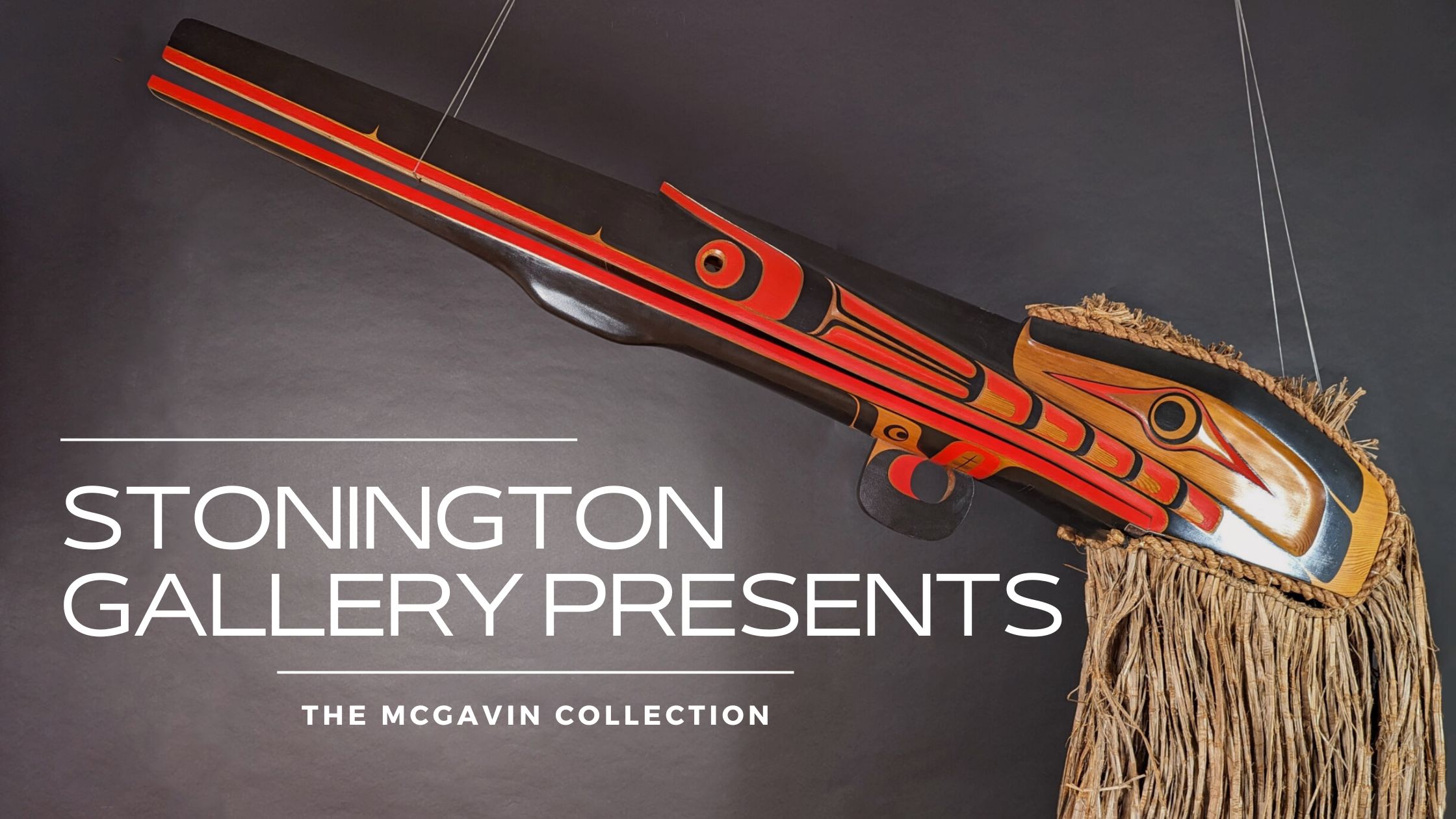
This May, Stonington Gallery is excited to bring The McGavin Collection to our space as we continue to celebrate our 45th anniversary. As the second installment of our “looking back” series, The McGavin Collection showcases nine artworks from Jay Brabant (Cree) and members of the Hunt family that were originally collected between 1980 and the early 2000s. This collection has works done in Bella Coola and Kwakwaka’wakw styles, some of which are masks that were intended for dance, along with impressive sculptures. Most notable among these incredible pieces is a six-and-a-half-foot Huxwhukw and a four-and-a-half-foot Kwaguilth Sun Mask.
The Huxwhukw and Cannibal Raven are two of the three cannibal birds in the Hamat’sa dance ceremony held by the Kwakwaka’wakw in winter. Some tribes have a similar ceremony with very similar characters but call it by a different name, such as the Cannibal Dance or Tanis Dance. The Huxwhukw can be readily identified by its very long and narrow beak. Cannibal Raven is often depicted with a large beak that curves at the tip with flared or exaggerated nostrils. The third cannibal bird is called Crooked Beak, which is the easiest to spot with its very curved beak. All three birds are typically painted in the traditional colors of black, red, and white. What makes the Hamat’sa dance so memorable are the gigantic elaborate masks, beautifully intricate regalia, and deep, complex storytelling. With these masks, the power and importance of the dance are palpable. The expertly carved wood, the cleanly painted formline, and the braided cedar bark give these pieces a substantial presence that is undeniable.
When a mask is danced, often, and especially when the mask is extremely large, there is a harness created to rest on the wearer’s shoulders so that it can be worn and articulated all at once. Sometimes they even require help from another person to help stabilize them as the wearer makes the mask move. This can be done by adding extra hand holds off the back of the mask, which the Bella Coola masks are great examples of. The dances and ceremonies held by Pacific Northwest Indigenous peoples were and continue to be about bringing people together. These dances are where the exchanging of knowledge and enjoying the company of those around you are both important to experience. These nine pieces from the McGavin Collection and the other works in this exhibition are a dedication to these dances.
Exhibition Dates:
May 2, 2024 - June 1, 2024Featured Works
-
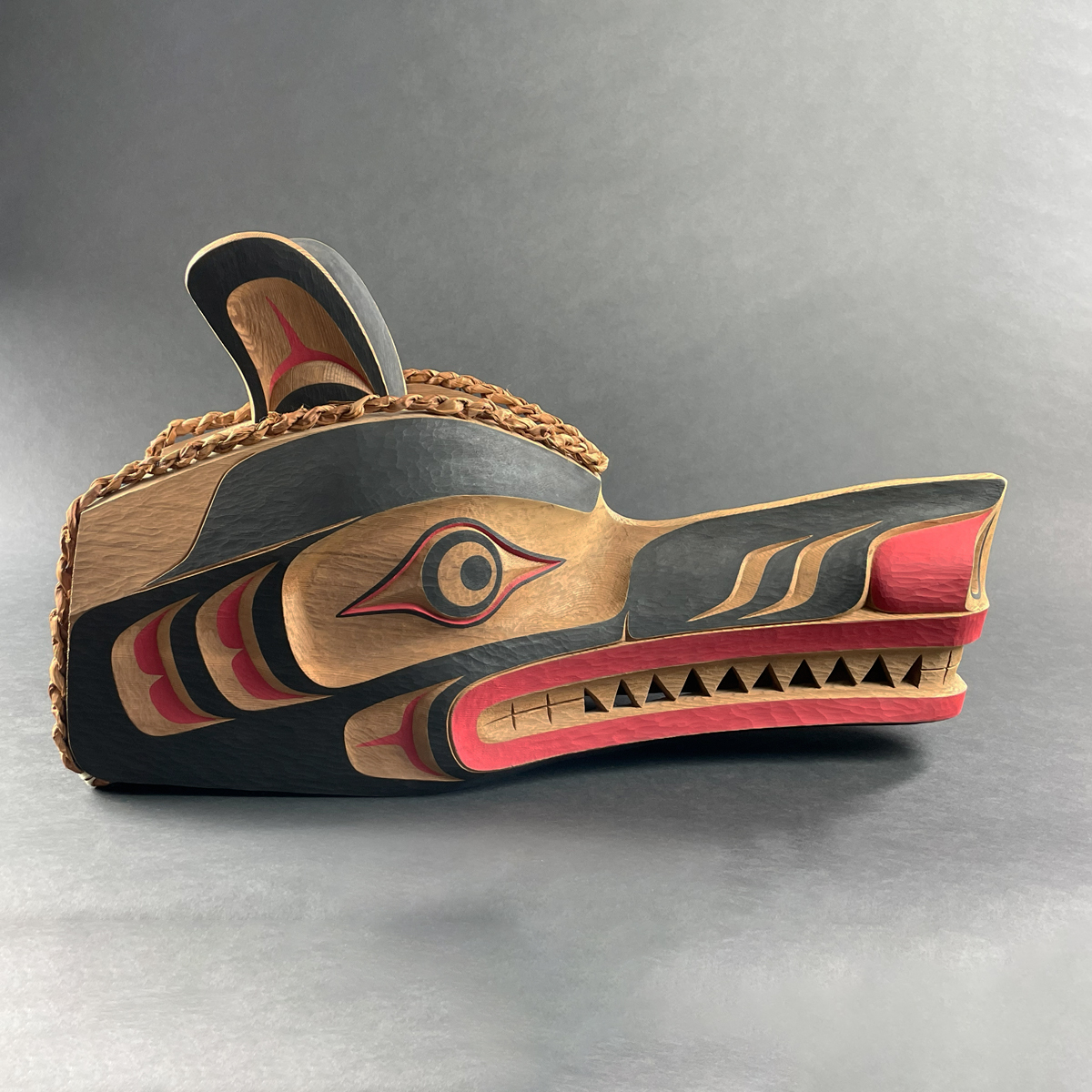 Tony Hunt, Jr.Kwaguilth Wolf Mask (2007)Red Cedar, Acrylic, Cedar Bark
Tony Hunt, Jr.Kwaguilth Wolf Mask (2007)Red Cedar, Acrylic, Cedar Bark- 12.5"h
- 23"w
- 8.5"d
SOLD -
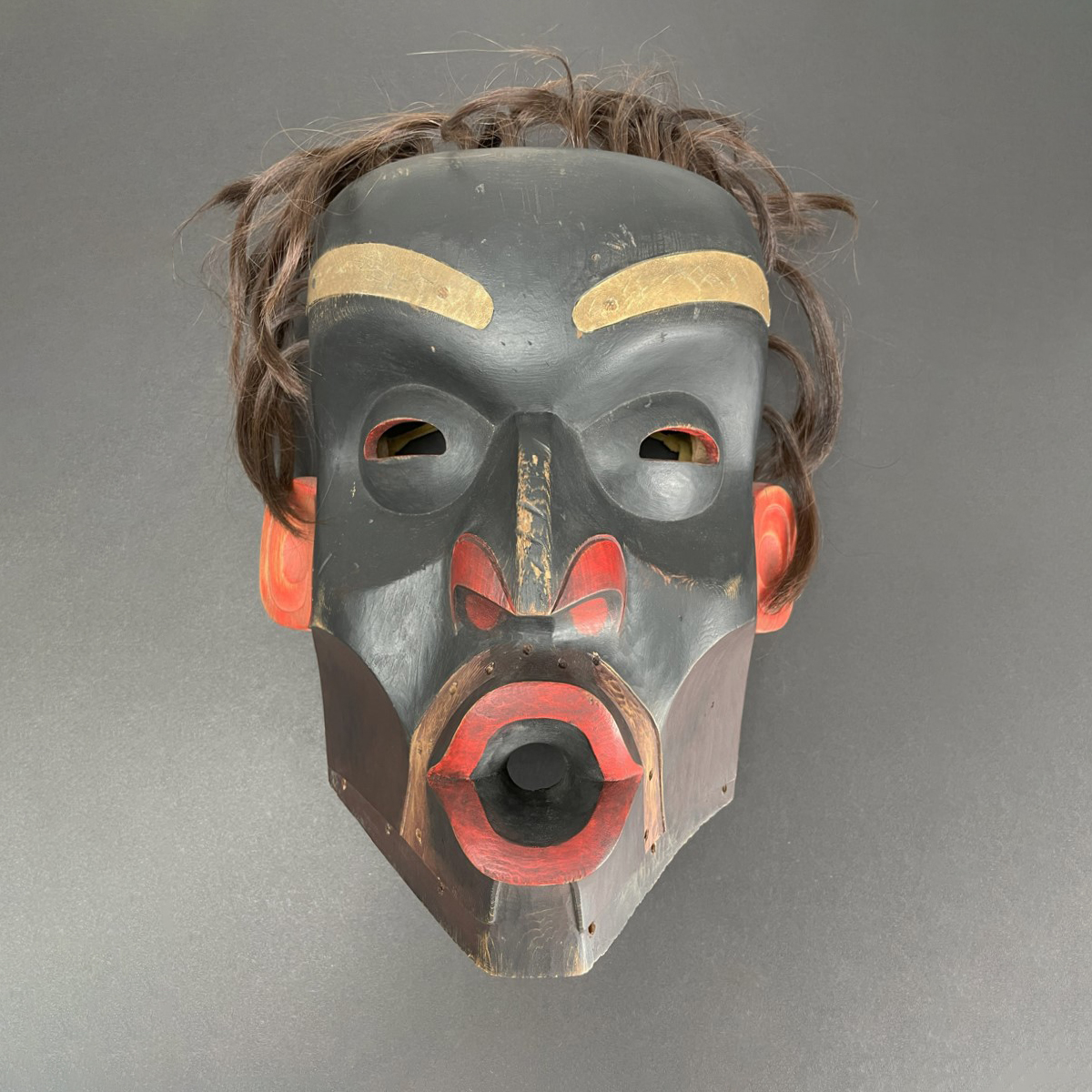 Jay BrabantKwaguilth Style Dzunukwa Mask (2006)Red Cedar, Acrylic, Leather, Copper Pegs, Human Hair
Jay BrabantKwaguilth Style Dzunukwa Mask (2006)Red Cedar, Acrylic, Leather, Copper Pegs, Human Hair- 12.5"h
- 10"w
- 5"d
SOLD -
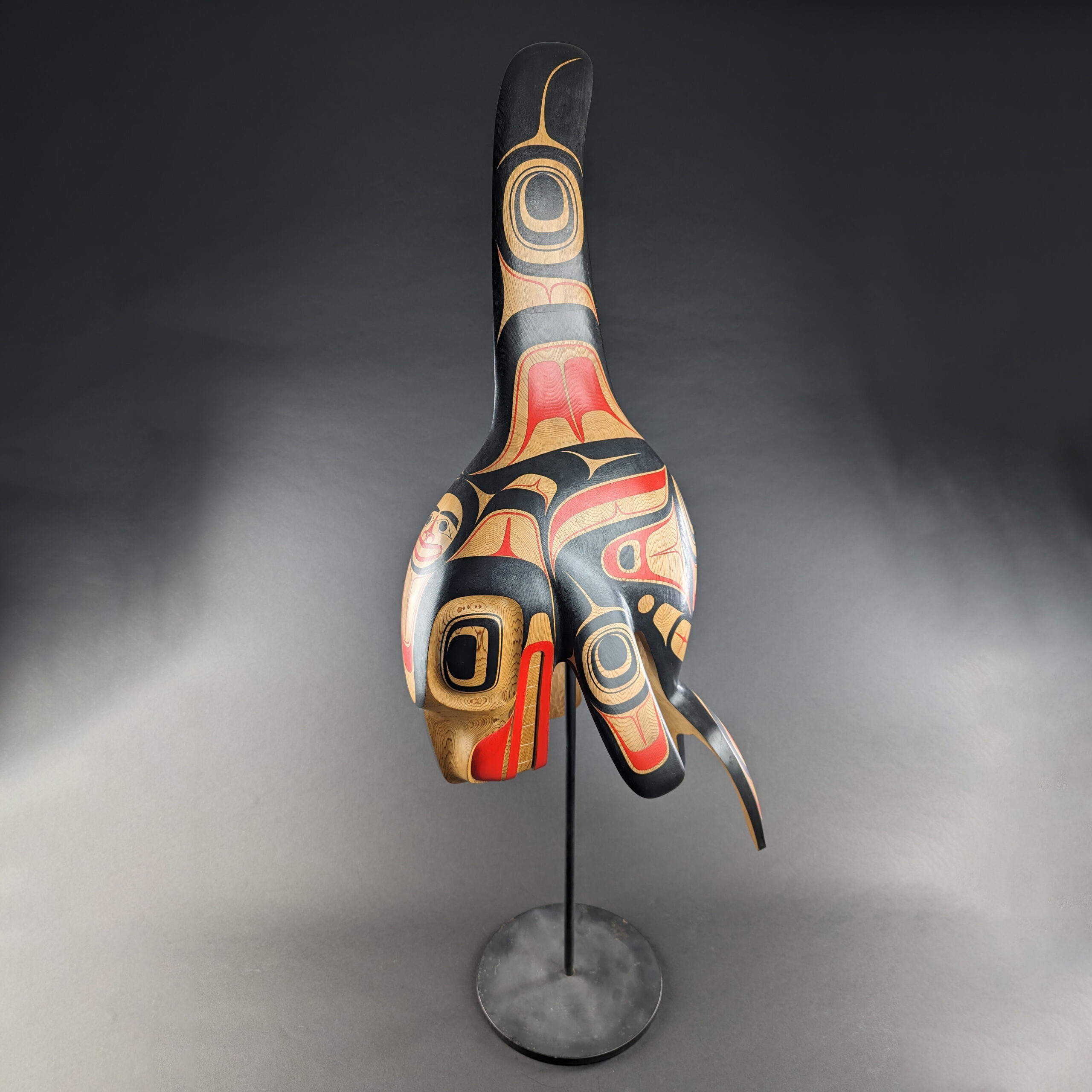 Jay BrabantKiller WhaleRed Cedar, Acrylic, Metal Stand
Jay BrabantKiller WhaleRed Cedar, Acrylic, Metal Stand- 54"h
- 15.75"w
- 9.5"d
SOLD -
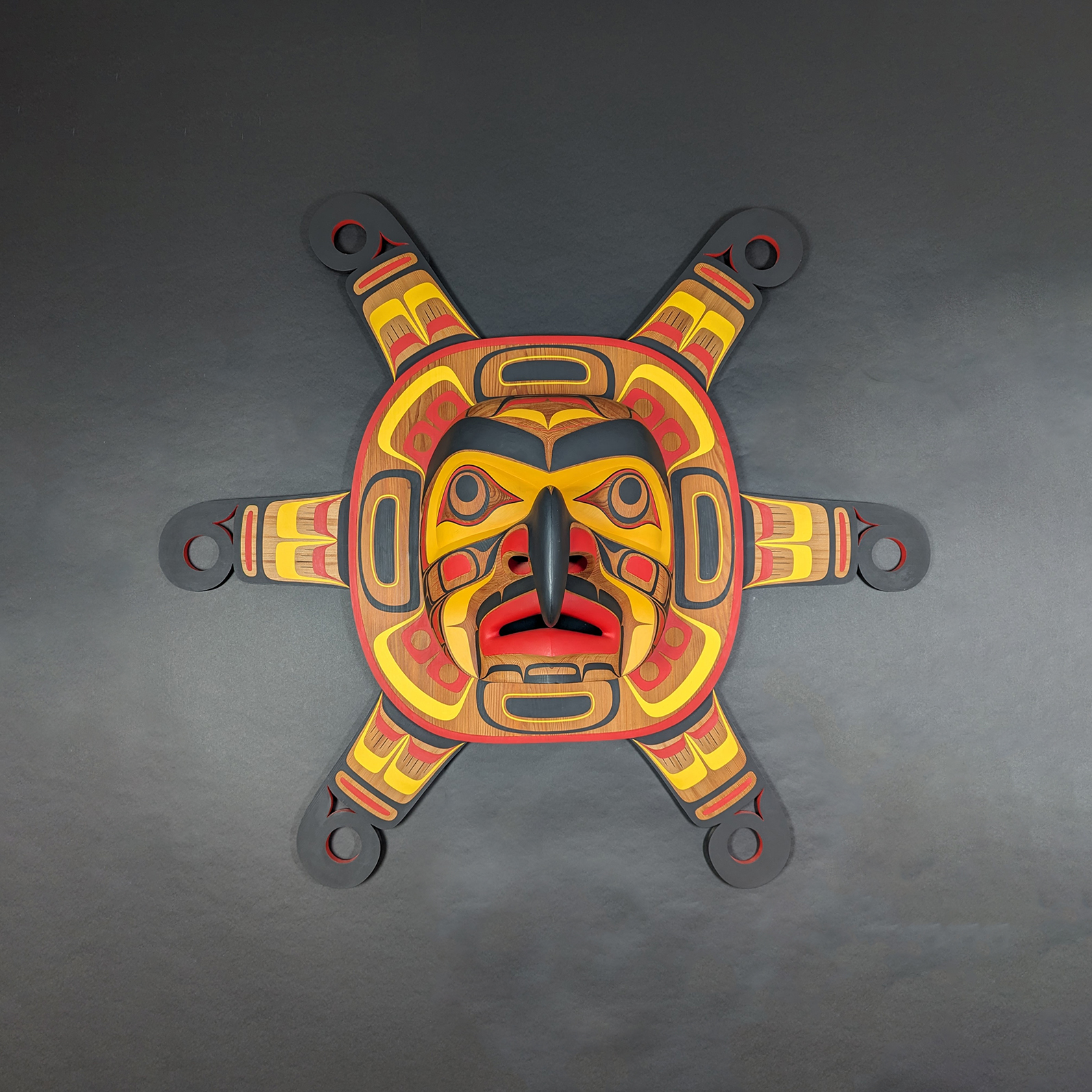 Jay BrabantSun Mask with RaysRed Cedar, Acrylic
Jay BrabantSun Mask with RaysRed Cedar, Acrylic- 49"h
- 54"w
- 12.5"d
SOLD -
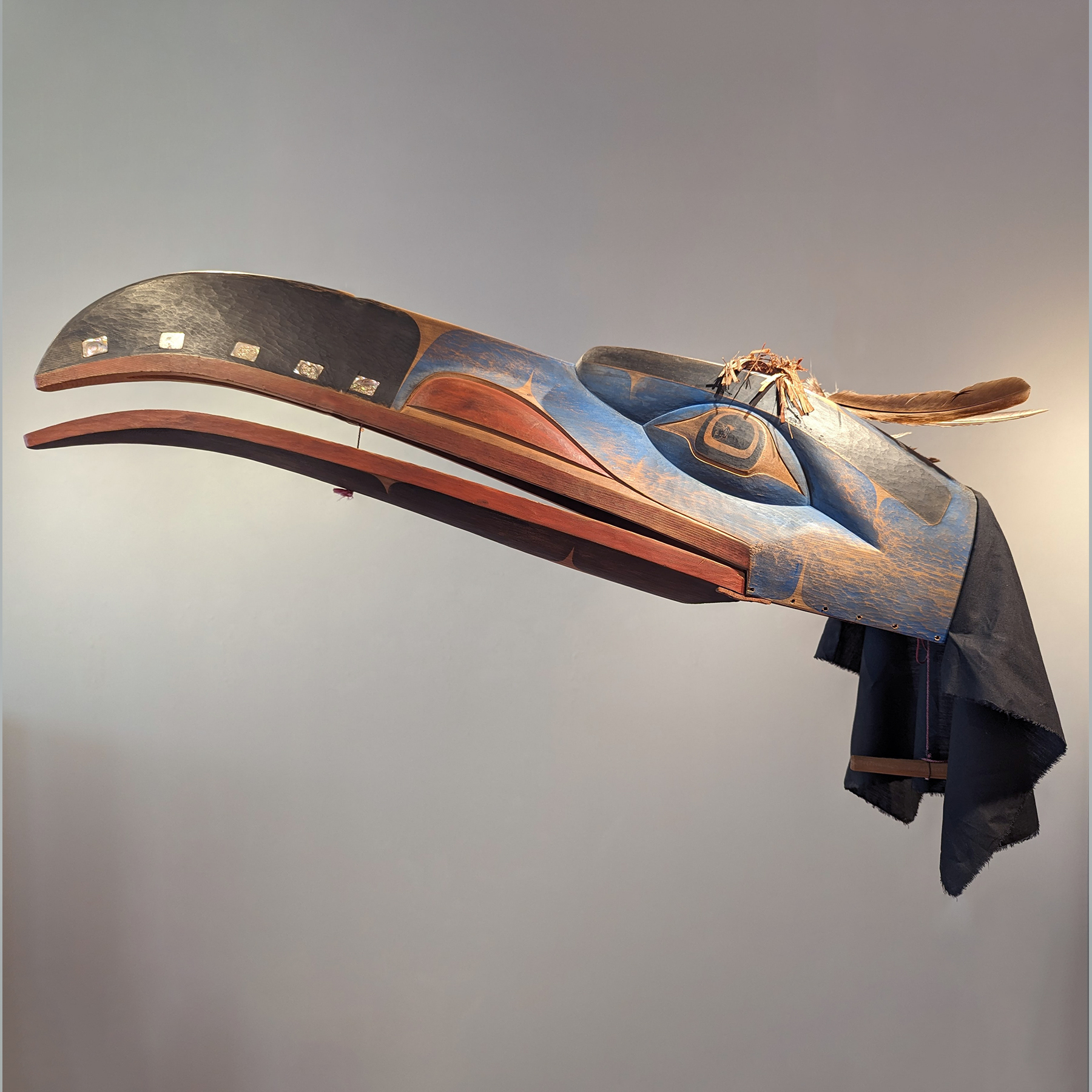 Jay BrabantBella Coola Style Raven-Blue (2006)Red Cedar, Acrylic, Abalone, Turkey Feathers
Jay BrabantBella Coola Style Raven-Blue (2006)Red Cedar, Acrylic, Abalone, Turkey Feathers- 10"h
- 40"w
- 9"d
SOLD -
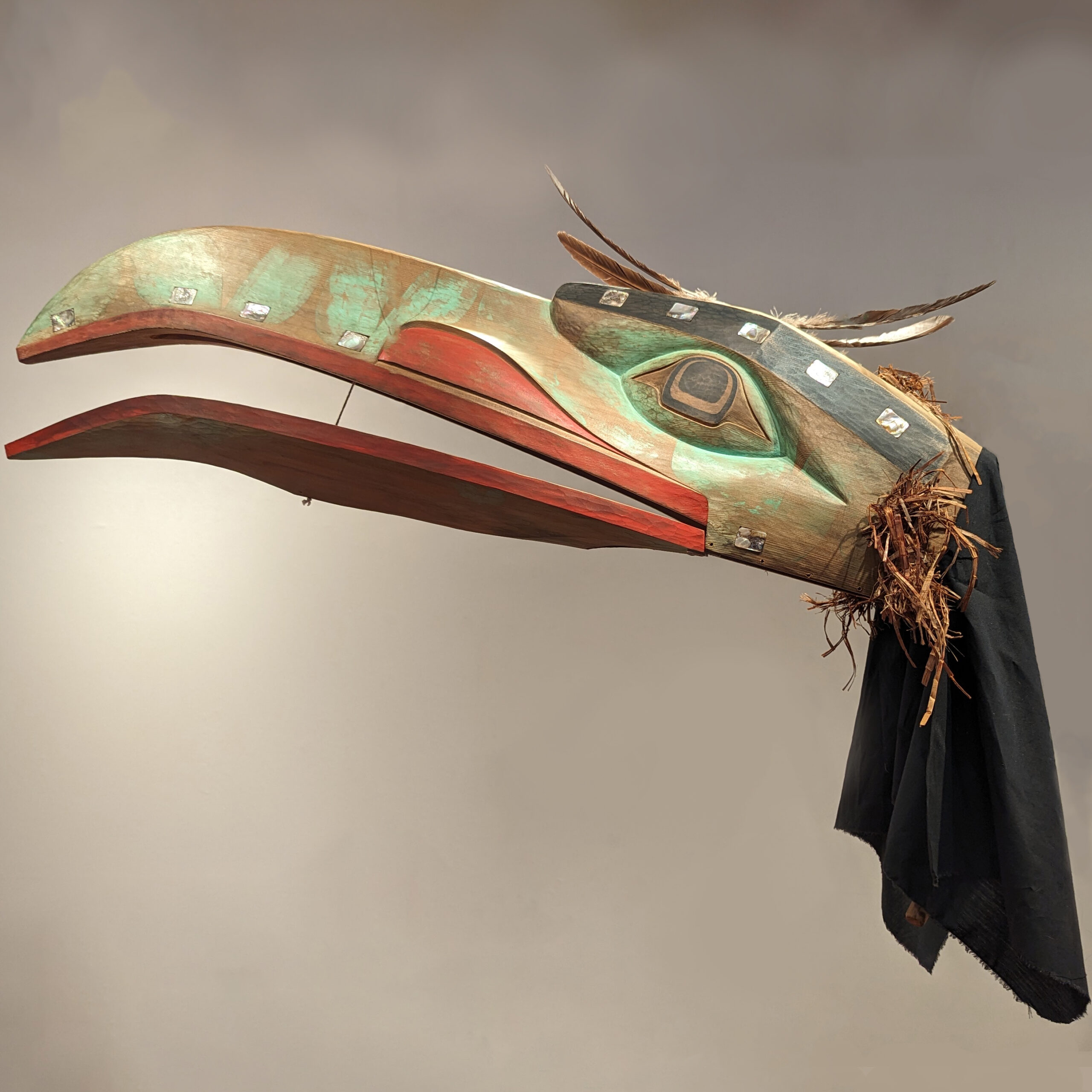 Jay BrabantBella Coola Style Raven – Green (2006)Red Cedar, Acrylic, Abalone, Turkey Feathers
Jay BrabantBella Coola Style Raven – Green (2006)Red Cedar, Acrylic, Abalone, Turkey Feathers- 10"h
- 40"w
- 12"d
SOLD
